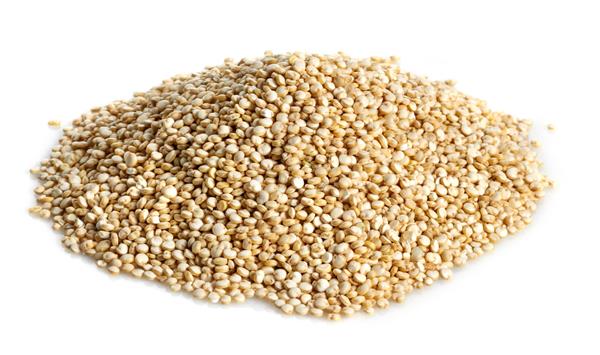Quinoa Farming:-
Introduction:- Quinoa is a plant native of S.America, to be more precise it is spontaneous in Andean regions – grows at altitudes up to 4,000 meters ( about 13,000 feet ) – and thus has very high strength characteristics, considered the temperatures of Andean mountains.
Quinoa is a vegetable belongs to Amaranthaceae family (Chenopodioideae sub-family), and it is identified by binomial nomenclature as Chenopodium quinoa. The most diffused and cultivated is the Real one. Besides this one, quinoa has over 200 other different varieties which can be mainly classified on the basis of growing areas. Moreover, quinoa varieties are also divided on the basis of seed colour which can be white, red, light brown, light yellow or black.
Quinoa is a herbaceous plant that fructify in a sort of panicle containing small seeds, pretty similar to the millet’s ones, widely used by humans for food purposes. Quinoa – although having nutritional properties quite similar to the ones of oats, barley, wheat, corn, millet, rice etc. – DOES NOT belong to cereals; in fact these latter ones belong to a different family, the one of Poaceae ( commonly called gramineae or true grasses ). In botanical terms, quinoa is much more similar to amaranth, beet, spinach and kali tragus ( the famous American shrub, the most common specie of tumbleweeds ) . Therefore, basing upon both botany and nutritional classification, quinoa is often defined a “ pseudo-cereal ”.
Now let us see how we to grow this wonderful plant on our own!.
Quinoa is native of Andean region countries, from Colombia to Western Argentina and Southern Chile. Main producing countries are Bolivia, Peru and United States but it is cultivated in France, England, Sweden, Denmark, Netherlands and Italy too. In the U.S. It is mainly cultivated in Colorado and Nevada, while in Canada it can be found in Ontario. In Kenya its cultivation is showing good yields and it could be grown successfully even in Himalaya and Northern India.
Facing the challenge of being able to increase quality food production to feed world population, quinoa provides an alternative for those countries suffering of chronic food shortage.
Concerning the climate, quinoa adapts to different climates: from warm and dry desert to coast, from dry cold of highlands to temperate and rainy climate of Andean valleys; thus we need to carefully choose the suitable genotypes for every different atmospheric condition.
Talking about light requirements it is a similar thing too: there are short day varieties, long day ones or even photo-insensitive ones. The best average temperature to grow quinoa ranges from 15 to 20 °C ( 59 – 69° F ) .
The ideal soil for quinoa is silty, – although it can adapts to clayey and sandy soils too – well drained and well furnished of organic substances ( this plant need a lot of nitrogen and calcium, as well as phosphorus and potassium ) , with little or no slopes , on condition that there are no water stagnation problems because it very sensitive of excessive moistness, above all in the first vegetative stages.
Optimum conditions for sowing are when soil has a temperature between 7° and 10°C ( 44 – 50 °F ) up to a maximum of 18-20°C ( 64-68 °F ) , with a good – but not excessive – moistness to help seeds germination.
Quinoa seeds, just like spinach ones, are not able to germinate if soil temperature is too high; so to obviate this drawback it could be necessary to put them in a refrigerator ( vernalization ).
In the northern hemisphere the optimal period to sow this plant is usually between April and May, while in southern one between October and November, with a seed density of about 10 -12 Kg/ha ( 22-26 Lbs/Acres ) .

Here is a list of what we need to start growing quinoa in our vegetable garden:
• Some containers ( even a flower pot saucer with holes could be good ) for germination.
• Fertile topsoil well drained.
• Quinoa seeds: even the ones purchased to cook and prepare recipes could be good, on condition that they have biological origin and are bought at a reliable and honest store. Treated seeds don’t germinate!
• Natural remedies against aphids: in fact quinoa leaves are very sensitive to aphids attacks.
To make seeds sprout, let’s organize a seedbed ( as shown in this article ) using soft topsoil, then put quinoa seeds and cover with another small topsoil layer. Let’s water the soil regularly and wait for 4-5 days.
When plants reach a height of about 3 cm ( 1.1811 inches ) we can proceed to bed out them in our field.
In order to protect the young plants in growing, the first bedding out can be performed in a greenhouse.
Then we need to wait from 90 to 120 days to crop this food.
Quinoa harvest is performed when plants reach their ripeness. It is suggested to harvest the seeds early in the morning, when plants are not completely dry yet ( when there is a bit of hoarfrost ) , in order to preserve seeds from falling on the ground.
Seeds drying process is usually performed at first arranging cropped plants into sheaves and letting them dry for 7/15 days. Then they are manually shaken together, on a large tarpaulin, so that seeds come off and can be gathered; or, for larger fields, we can use a threshing machine. Quinoa is then deprived of any plant residue still present near the seeds ( leaves, small pieces of wood, etc. ) . Sometimes, if seeds are not dried enough, are exposed to sunlight and then stirred, or – in absence of direct sunlight – dried with hot air of ovens.

I need to get in touch with anyone who has info on quinoa in Uganda. Like, seeds, prices and what ever.
Thanks
I need to get in touch with anyone who has information about quinoa cultivation in Uganda.